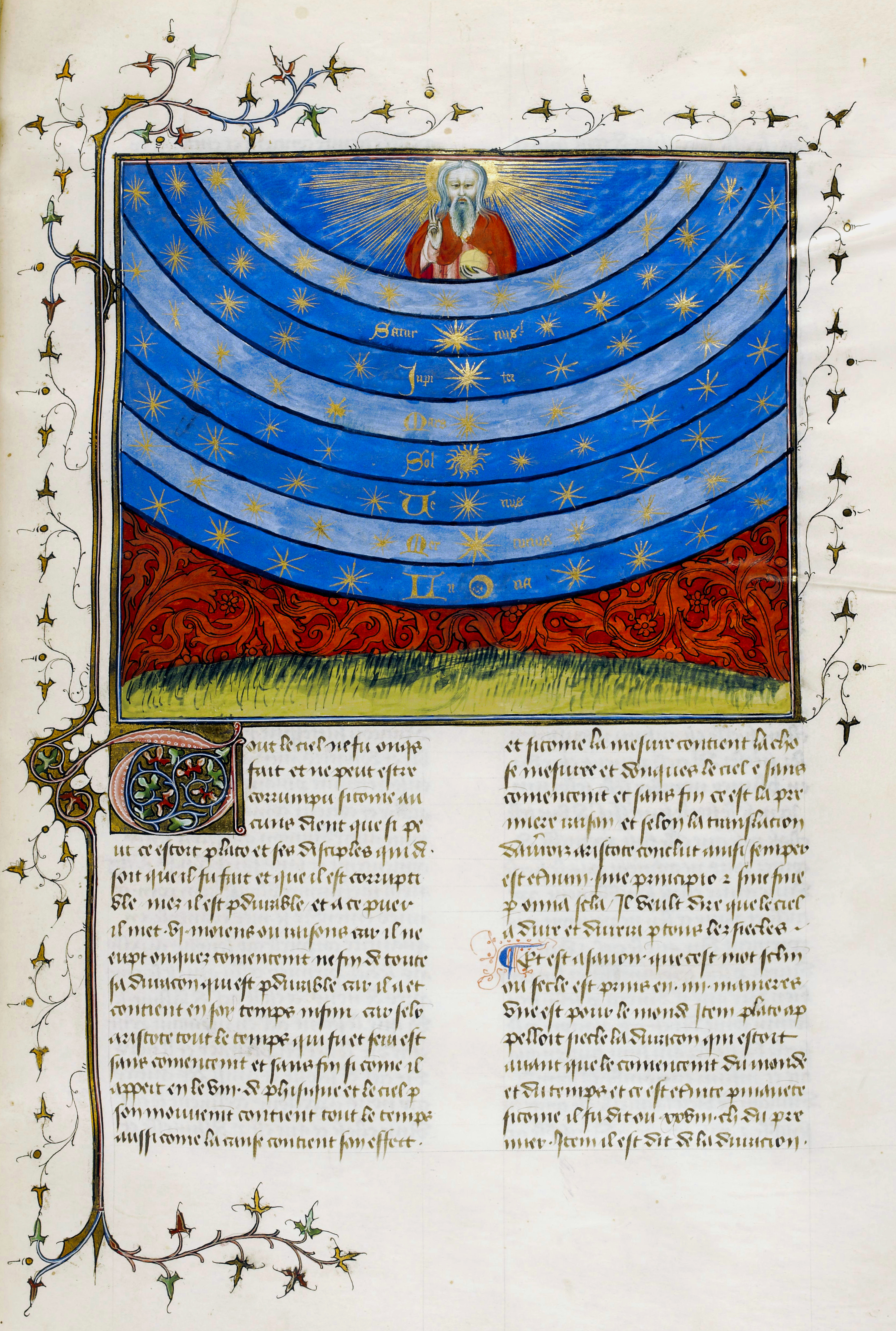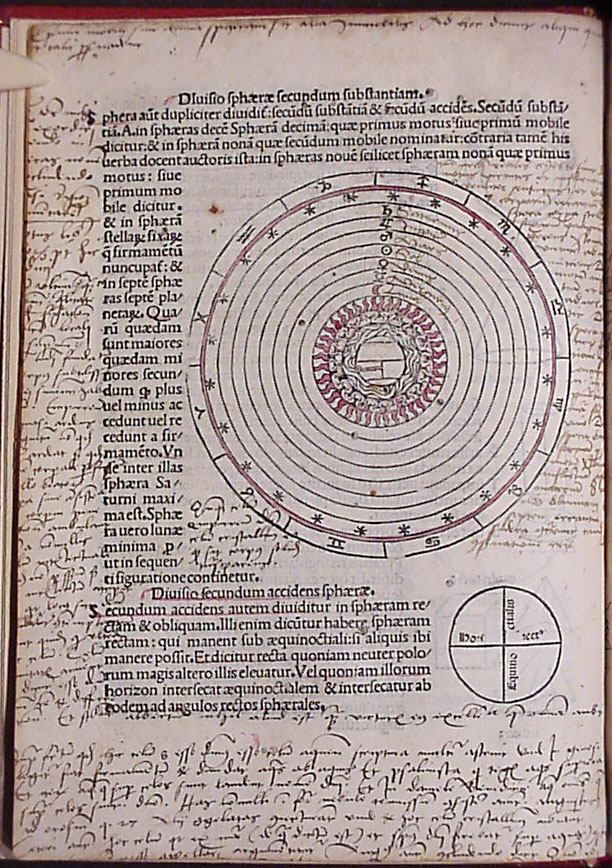|
Johannes Lauratius De Fundis
Johannes Paulus Lauratius de Fundis () was a medieval astronomer and professor of astrology in Bologna. He is known for several manuscript works including ''Tractatus reprobationis eorum que scripsit Nicolaus Orrem'' (1451) and ''Nova theorica planetarum''. Johannes Lauratius (or Paulus) de Fundis lectured in astrology at the University of Bologna between 1428 and 1473. He made original astronomical observations including that of Mars in 1843. He wrote several commentaries and tracts including ''Tacuinus astromico-medicus'' (1435), ''Questio de fine sec durabilitate mundi'' (1445), ''Nova spera materialis'' (1456), and ''Tractatus reprobacionis eorum que scripsit Nicolaus Orrem'' (1451). The last being a defense of astrology to counter the claims of Nicole Oresme. For events on the earth, he blamed both the sky and princes but claimed that princes could resist the influence of the stars. His major work however was ''Nova theorica planetarum'' (incipit, “Theorica speculativa dicitur ... [...More Info...] [...Related Items...] OR: [Wikipedia] [Google] [Baidu] |
Bologna
Bologna ( , , ; ; ) is the capital and largest city of the Emilia-Romagna region in northern Italy. It is the List of cities in Italy, seventh most populous city in Italy, with about 400,000 inhabitants and 150 different nationalities. Its Metropolitan City of Bologna, metropolitan province is home to more than 1 million people. Bologna is most famous for being the home to the List of oldest universities in continuous operation, oldest university in continuous operation,Top Universities ''World University Rankings'' Retrieved 6 January 2010Hunt Janin: "The university in medieval life, 1179–1499", McFarland, 2008, , p. 55f.de Ridder-Symoens, Hilde [...More Info...] [...Related Items...] OR: [Wikipedia] [Google] [Baidu] |
University Of Bologna
The University of Bologna (, abbreviated Unibo) is a Public university, public research university in Bologna, Italy. Teaching began around 1088, with the university becoming organised as guilds of students () by the late 12th century. It is the List of oldest universities in continuous operation, oldest university in continuous operation in the world, and the first degree-awarding institution of higher learning.Hunt Janin: "The university in medieval life, 1179–1499", McFarland, 2008, , p. 55f.de Ridder-Symoens, Hilde''A History of the University in Europe: Volume 1, Universities in the Middle Ages'' Cambridge University Press, 1992, , pp. 47–55 The university's emblem carries the motto, ''Alma Mater Studiorum'' ("Nourishing mother of studies"), and the date ''A.D. 1088''. With over 90,000 students, the University of Bologna is one of the List of largest universities by enrollment, largest universities in Europe. The university saw the first woman to earn a university degree ... [...More Info...] [...Related Items...] OR: [Wikipedia] [Google] [Baidu] |
Nicole Oresme
Nicole Oresme (; ; 1 January 1325 – 11 July 1382), also known as Nicolas Oresme, Nicholas Oresme, or Nicolas d'Oresme, was a French philosopher of the later Middle Ages. He wrote influential works on economics, mathematics, physics, astrology, astronomy, philosophy, and theology. He was Bishop of Lisieux, a translator, a counselor of King Charles V of France, and one of the most original thinkers of 14th-century Europe. Life Nicole Oresme was born in the village of Allemagnes (today's Fleury-sur-Orne) in the vicinity of Caen, Normandy, in the diocese of Bayeux. Practically nothing is known concerning his family. The fact that Oresme attended the royally sponsored and subsidised College of Navarre, an institution for students too poor to pay their expenses while studying at the University of Paris, makes it probable that he came from a peasant family. Oresme studied the "arts" in Paris, together with Jean Buridan (the so-called founder of the French school of natural philos ... [...More Info...] [...Related Items...] OR: [Wikipedia] [Google] [Baidu] |
Johannes De Sacrobosco
Johannes de Sacrobosco, also written Ioannes de Sacro Bosco, later called John of Holywood or John of Holybush ( 1195 – 1256), was a scholar, Catholic monk, and astronomer who taught at the University of Paris. He wrote a short introduction to the Hindu-Arabic numeral system. Judging from the number of manuscript copies that survive today, for the next 400 years it became the most widely read book on that subject. He also wrote a short textbook which was widely read and influential in Europe during the later medieval centuries as an introduction to astronomy. In his longest book, on the computation of the date of Easter, Sacrobosco correctly described the defects of the then-used Julian calendar, and recommended a solution similar to the modern Gregorian calendar three centuries before its implementation. Very little is known about the education and biography of Sacrobosco. For one thing, his year of death has been guessed at 1236, 1244, and 1256, each of which is pl ... [...More Info...] [...Related Items...] OR: [Wikipedia] [Google] [Baidu] |
15th-century Astrologers
The 15th century was the century which spans the Julian calendar dates from 1 January 1401 (represented by the Roman numerals MCDI) to 31 December 1500 (MD). In Europe, the 15th century includes parts of the Late Middle Ages, the Early Renaissance, and the early modern period. Many technological, social and cultural developments of the 15th century can in retrospect be seen as heralding the " European miracle" of the following centuries. The architectural perspective, and the modern fields which are known today as banking and accounting were founded in Italy. The Hundred Years' War ended with a decisive French victory over the English in the Battle of Castillon. Financial troubles in England following the conflict resulted in the Wars of the Roses, a series of dynastic wars for the throne of England. The conflicts ended with the defeat of Richard III by Henry VII at the Battle of Bosworth Field, establishing the Tudor dynasty in the later part of the century. Constanti ... [...More Info...] [...Related Items...] OR: [Wikipedia] [Google] [Baidu] |
15th-century Italian Astronomers
The 15th century was the century which spans the Julian calendar dates from 1 January 1401 (represented by the Roman numerals MCDI) to 31 December 1500 (MD). In Europe, the 15th century includes parts of the Late Middle Ages, the Early Renaissance, and the early modern period. Many technological, social and cultural developments of the 15th century can in retrospect be seen as heralding the " European miracle" of the following centuries. The architectural perspective, and the modern fields which are known today as banking and accounting were founded in Italy. The Hundred Years' War ended with a decisive French victory over the English in the Battle of Castillon. Financial troubles in England following the conflict resulted in the Wars of the Roses, a series of dynastic wars for the throne of England. The conflicts ended with the defeat of Richard III by Henry VII at the Battle of Bosworth Field, establishing the Tudor dynasty in the later part of the century. Constant ... [...More Info...] [...Related Items...] OR: [Wikipedia] [Google] [Baidu] |
Academic Staff Of The University Of Bologna
An academy (Attic Greek: Ἀκαδήμεια; Koine Greek Ἀκαδημία) is an institution of tertiary education. The name traces back to Plato's school of philosophy, founded approximately 386 BC at Akademia, a sanctuary of Athena, the goddess of wisdom and skill, north of Athens, Greece. The Royal Spanish Academy defines academy as scientific, literary or artistic society established with public authority and as a teaching establishment, public or private, of a professional, artistic, technical or simply practical nature. Etymology The word comes from the ''Academy'' in ancient Greece, which derives from the Athenian hero, ''Akademos''. Outside the city walls of Athens, the gymnasium was made famous by Plato as a center of learning. The sacred space, dedicated to the goddess of wisdom, Athena, had formerly been an olive grove, hence the expression "the groves of Academe". In these gardens, the philosopher Plato conversed with followers. Plato developed his sessions ... [...More Info...] [...Related Items...] OR: [Wikipedia] [Google] [Baidu] |






